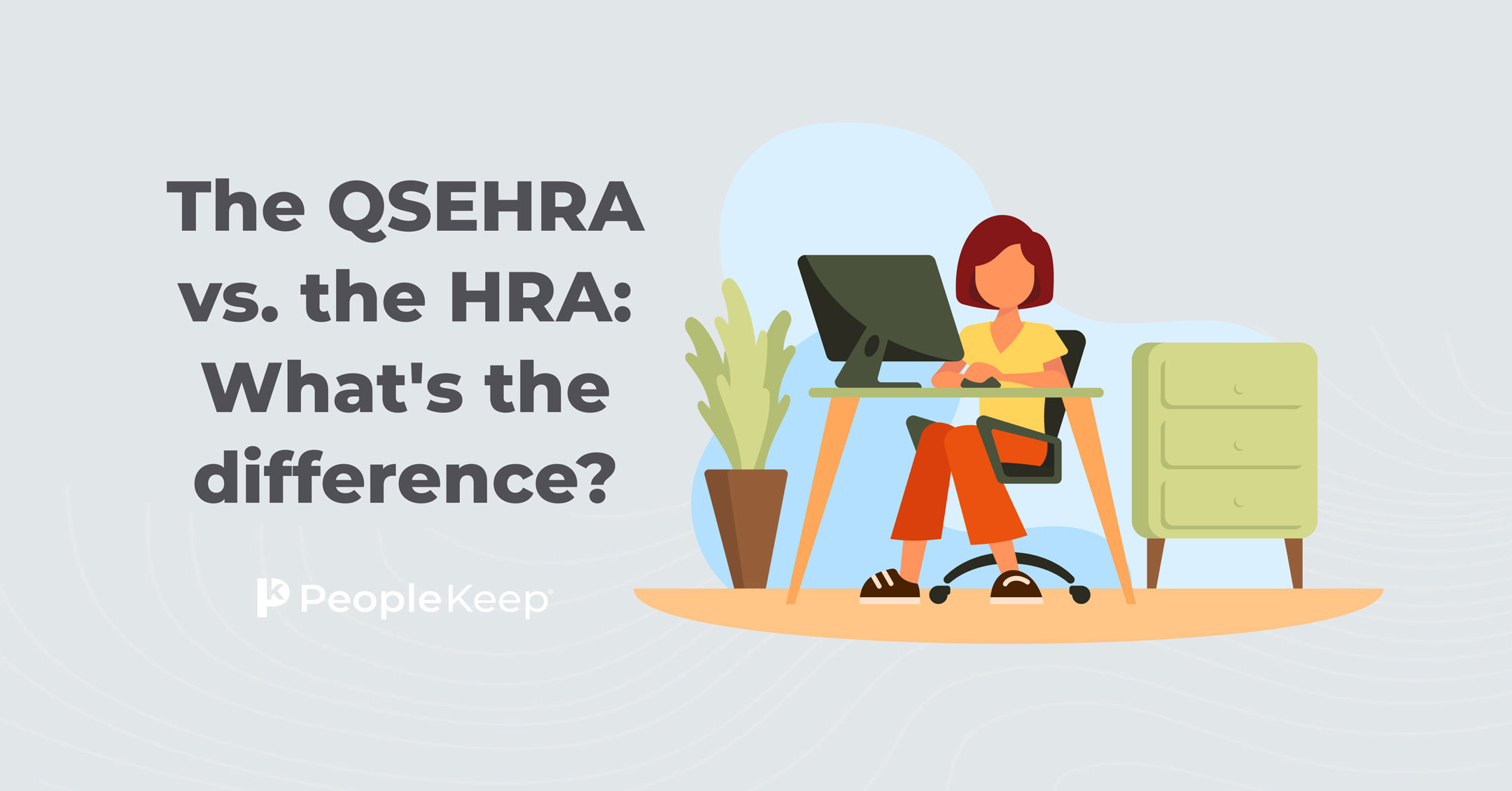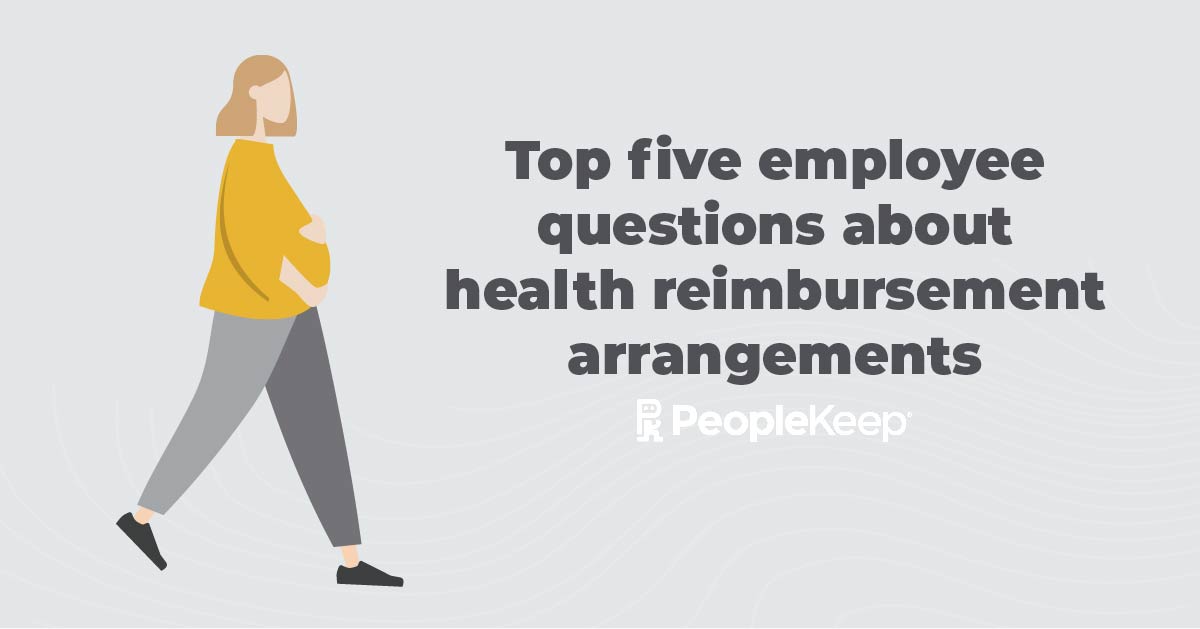What are flexible benefits?
By Elizabeth Walker on June 2, 2025 at 9:45 AM
There are six generations in today’s workforce. A one-size-fits-all benefits package no longer cuts it. An employer’s compensation package must include options beyond traditional benefits to address their wide range of needs. By offering flexible perks, you can better attract and retain your employees by allowing them to tailor their benefits to work best for them and their families.
If you think flexible benefits are too complicated or expensive to provide, you’re in luck. Not all flex benefits are monetary, so there are options for companies of all budgets. Some flexible benefits also provide cost savings compared to traditional benefits. Plus, with benefits administration software, you can easily manage your employee perks without the headache.
This blog will explain the basics of flexible benefit plans and how your organization can offer them.
In this blog post, you’ll learn:
- What flexible benefits are and how they give employees personalized options beyond traditional compensation.
- Why offering flexible benefits matters to stay competitive in your industry and attract talented workers.
- Various examples of flexible benefits you can offer that can support all your employees’ unique needs.
What are flexible benefits?
Flexible benefits are perks and other forms of compensation that employees can choose to participate in and customize according to their needs. Unlike traditional mandatory and voluntary benefits, employees typically don’t pay extra for these perks.
Employers can use flex benefits to cover the things that matter most to their employees. Depending on how you structure the benefit or plan, employees may receive a cash payout instead of opting into the perk. However, this is only an option for some benefits.
Many flexible benefits plans work on a reimbursement basis. Employees receive a monthly or annual allowance, such as in the form of a lifestyle savings account (LSA), and pay for their preferred products and services. Then, you review your employees’ expenses and reimburse them for the cost.
However, some benefits work on a pre-funded basis. For example, individuals with a health savings account (HSA) typically use an HSA debit card to pay for eligible items. So, ensuring your employees know how each benefit works is key to getting the most use out of their perks.
Why should you offer flexible benefits?
Flexible benefits are popular among workers and employers because they’re inclusive. They give every employee the freedom to use their benefits package in the best way for them. This flexibility increases employee satisfaction and makes your organization more attractive in a competitive job market.
Three other advantages of offering a flexible benefits plan at your organization are:
- It increases employee recruitment and retention. A flexible benefits package that gives your employees more choice is a sure way to attract top talent and keep your current staff engaged and happy. A recent study found that 84% of workers are interested in more personalized and comprehensive benefit packages1. By offering flexible benefits, you’ll be more likely to entice job seekers and keep turnover low.
- It gives employees control over their benefits. Flexible benefits allow employees to make their own choices. For example, working parents may want nanny benefits, while other employees may want money for pet insurance. With flex benefits, all your workers can get the services and products they need. And because they usually come at a discounted rate, your workers will experience more financial stability, too.
- Many flexible benefits are tax-free or tax-advantaged. You may fund some flexible benefits with pre-tax dollars, lowering your and your employees’ tax liability. You can determine the taxability of your benefits by referencing IRS Publication 15-B2.
Common examples of flexible benefits
There are many types of flex benefit offerings available, so it can be overwhelming if you’re refreshing your compensation package. If you’re unsure where to start, you can survey your employees to determine which benefits they want the most. This ensures you get the best bang for your buck, as your employees would be more likely to use them.
But, there are several perks that most employees are looking for in a modern and flexible workplace. The sections below will cover six popular types of flex benefits.
1. Health benefits
Traditional group health insurance remains the most common employer-sponsored health coverage option in the U.S. However, it’s not very flexible for diverse workforces, has strict participation requirements, and has costly health insurance premiums. If you’re self-funding a group plan, you also have to contend with the risk of high claims. Luckily, there are flexible health benefits that are budget-friendly for employers and customizable for employees.
Four flexible health benefit options include:
- Health reimbursement arrangements (HRAs). A health reimbursement arrangement is an IRS-approved, employer-funded health benefit that allows you to reimburse employees, tax-free, for qualified out-of-pocket medical expenses. Some HRAs, like the individual coverage HRA (ICHRA) and qualified small employer HRA (QSEHRA), even reimburse individual health insurance premiums. A few HRAs have annual contribution limits, but not all do, so they’re flexible enough to meet every employer’s needs. Additionally, HRAs are employer-owned and aren’t pre-funded, so any unused dollars stay with you. An HRA is a great way to break free from group health insurance with a cost-controlled benefit.
- Health savings accounts (HSAs). Like HRAs, employees can use an HSA to pay for medical services and other out-of-pocket healthcare costs. HSA contributions use pre-tax dollars. However, the employer and the employee can contribute up to an annual limit to the account. HSAs only work with HSA-qualified high-deductible health plans (HDHPs), and any contributed funds stay with the employee even if they leave your company. HSAs don’t cover insurance premiums.
- Flexible spending accounts (FSAs). A flexible spending account also allows employees to use pre-tax contributions to pay for medical expenses. The employer and employee contribution limit for FSAs is $3,300 in 2025. However, FSA funds don’t roll over from year to year, and employees don’t take the account with them if they quit or retire from your company.
- Dental and vision insurance. Dental and vision plans are supplemental benefits. Group and individual health plans don’t typically cover dental or vision expenses. So, if you’re offering a group medical plan, you may want to provide a group dental or vision benefit plan to better support their overall health and well-being. But, if you switch to an ICHRA or QSEHRA, your employees can use their allowance to enroll in an individual dental or vision plan.
2. Stipends
Stipends are fixed amounts of money employees can spend on whatever they choose. Unlike many other flex benefits, the federal government considers most stipends taxable income. Stipends typically work on a reimbursement model: You give your employees a monthly or annual allowance or reimburse them for the expense once you approve their purchase.
You can offer a stipend for any services or expense categories you think your employees will like, such as:
- A health stipend
- A remote work stipend
- A wellness stipend
- Other expenses, such as pet insurance, professional development, student loan reimbursement, and meals.
Stipends have fewer regulations than other benefits. While this makes them flexible for employees, it could enable them to use their stipends in ways you didn’t intend. For example, if you give your employees a health stipend, they’re not required to use it on healthcare items. You also can’t require receipts for insurance premiums, medical services, or prescriptions.
3. Transportation benefits
Transportation, or commuter benefits, are perfect examples of flexible perks because you can adapt them to each employee’s needs. Not every employee works in the office or has a long commute. But for those who do, this benefit is especially valuable.
Commuter benefits help employees cover commuting costs, such as:
- Mass transit passes, tokens, or vouchers
- Carpooling
- Parking expenses
You can offer transportation perks that cover mass transit costs on a pre-tax or post-tax basis. If you want to provide pre-tax commuter benefits, the IRS has guidelines for employers to do so compliantly.
4. Childcare and elder care services
Childcare expenses can rack up over time. Luckily, there are several ways to support your employees with children.
You can better support working parents with a childcare stipend or a dependent care FSA. You can even partner with local daycare providers to provide your staff with childcare at a reduced cost while they’re in the office.
To be truly inclusive, you should also consider adding the following to your benefits package:
- Fertility benefits
- Adoption assistance
- Nanny benefits
Childcare is important, but don’t forget about elder care. According to recent research, about one in five employees spend time outside of work caring for a loved one. This translates to $6,410 per employee per year in lost productivity for employers3.
Offering employees a family stipend can help them provide better care for their families, strengthen their financial stability, and feel more secure in their professional lives.
5. Retirement plans
Traditional IRA plans, 403(b), Thrift Savings, and many 401(k) plans are pre-tax benefits. This means employees can reduce their tax liability by contributing pre-tax dollars toward their retirement.
Aside from the tax advantages, you can fund retirement plans through employer matching contributions. Many retirement accounts have higher contribution limits for older employees and protection from creditors, making them a vital investment tool.
Our 2024 Employee Benefits Survey found that 89% of employees value retirement benefits. But, unsurprisingly, older employees tend to value them more than younger employees. That’s why offering them as a flexible benefit is a great way to make sure all your employees have the option to participate in them if they choose.
6. PTO and flex work schedules
Not all benefits are monetary. In fact, robust PTO policies and flexible work schedules are core benefits that are becoming more popular perks to offer.
Traditional time off policies group leaves into different categories. But PTO is one category that includes any time you pay employees when they’re not working, such as vacation days, sick time, and holidays.
You can structure your PTO policy in the following ways:
- Set a specific number of days per year
- Allow rollovers of unused days from year to year
- Use an accrual method based on hours worked
- Offer an unlimited number of days per year
In addition to PTO, employers can permit employees to arrange their work schedules according to their personal lives.
Flexible work schedules can include:
- Allowing employees to work remotely
- Use a hybrid model
- Opt for a 9/80 schedule
- Work outside regular business hours, such as from 6 a.m. to 2 p.m.
Both PTO and flexible work options help employees improve their work-life balance. When your employees feel you trust them enough to give them this level of control, you’ll see greater confidence, engagement, and productivity throughout your team.
How can you offer flexible benefits to your employees?
Offering flexible benefits doesn’t have to be complicated. Nowadays, many benefit administration tools make managing your perks quick and easy. Some even integrate with your payroll systems and help you track federal, state, and local regulations so your company stays compliant.
If you’re interested in offering an HRA, PeopleKeep by Remodel Health is the way to go. We make it easy for small to mid-sized businesses to provide personalized health benefits without the hassle. Our user-friendly platform simplifies every step of HRA administration so you can focus on your business, not paperwork.
With PeopleKeep by Remodel Health, you can:
- Give your employees the freedom to choose the individual health plan that fits them best while offering them HRA dollars to cover the cost of their monthly premiums.
- Design an HRA that’s tailored to your company’s budget and goals.
- Simplify benefits management with built-in administrative platform tools for reimbursement processing and compliance tracking.
- Stay on top of IRS and regulatory requirements so you avoid tax issues.
- Keep your healthcare costs predictable while still offering meaningful coverage.
- Offer your employees health insurance plan shopping and enrollment support with access to our in-house team of experts.
Better yet, our award-winning customer support team is here to help you or your employees navigate your benefits journey.
Are you a larger employer seeking advanced compliance features and a more personalized approach? If so, Remodel Health offers an ICHRA+ solution. With ICHRA+, you’ll have access to a high-touch administration service built to support employers with more complex needs.
Conclusion
Your employee benefit program shouldn’t be one-size-fits-all. To be inclusive and attract the best workers, you must offer flexible benefits. Not only will flex benefits increase employee satisfaction and productivity, but it will show you’re an employer of choice with a company culture that puts your staff first.
If you want to provide flexible benefits like an HRA at your company, PeopleKeep can help. Schedule a call with one of our HRA specialists, and we’ll help you design a personalized health benefit for your organization.
This article was originally published on April 5, 2023. It was last updated on June 2, 2025.
Check out more resources
See these related articles

The QSEHRA vs. the HRA: What's the difference?
Confused about the difference between an HRA and a QSEHRA? This guide explains how a QSEHRA compares to other types of HRAs.

How your employee benefits package can foster inclusivity
Discover how an inclusive benefits package can foster workplace inclusivity. Learn which benefits support diversity and meet employee needs.

HRA FAQs for employees
Have questions about HRAs? This employee-friendly FAQ covers how health reimbursement arrangements work, what they cover, and how to get started.



